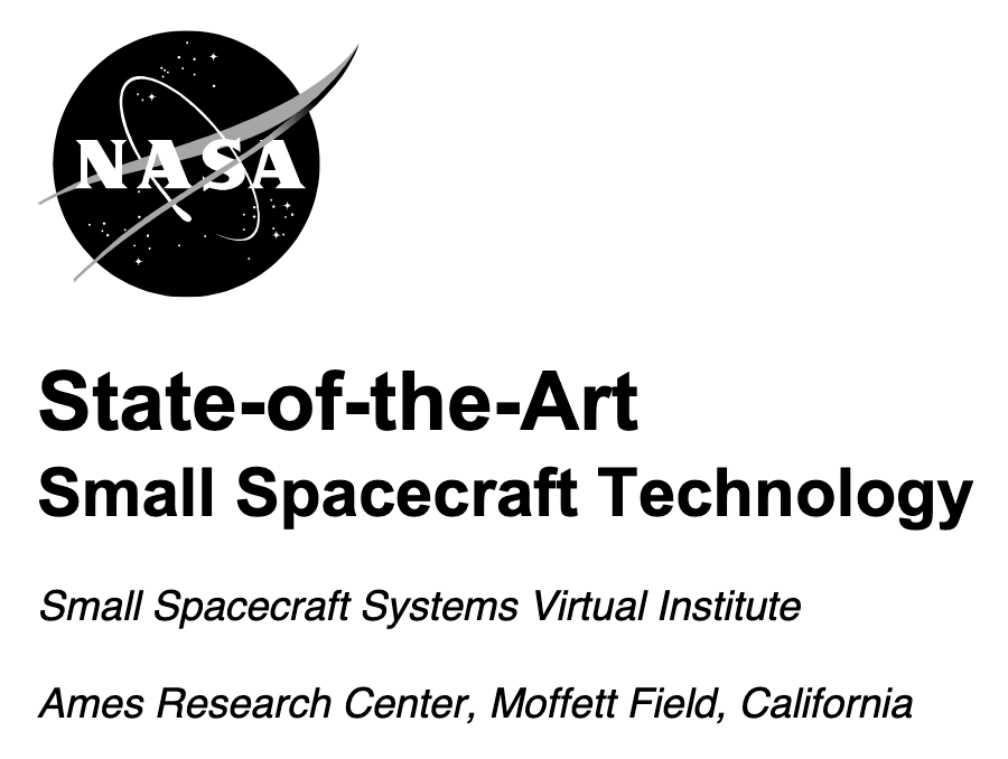
When the first edition of NASA’s Small Spacecraft Technology State-of-the-art report was published in 2013, 247 cubesats and 105 other non-cubesat small spacecraft under 50 kilograms (kg) had been launched, and these represented less than 2% of launched mass into orbit.
By 2019, small spacecraft with mass less than 180 kg made up almost 7% of all mass launched into orbit. Additionally, 63% of spacecraft under 600 kg had mass less than 180 kg and of those 47% were cubesats (1). Since 2013, flight heritage for small spacecraft, primarily cubesats, has nearly doubled and with dedicated smallsat launch capabilities readily available and expanding, opportunities to demonstrate new technologies and systems are expected to increase.
The 2020 edition of this report captures and distills the wealth of new information available on small spacecraft systems from NASA and other publicly available sources. Overall, this report is a survey of small spacecraft technologies sourced from open literature; it does not endeavor to be an original source, and only considers literature in the public domain to identify and classify devices. This report includes many dedicated hours of desk research performed by subject matter experts reviewing resources noted above.
The organizational approach for each chapter is relatively consistent with previous editions with the introduction of the technology, current development status of the technology’s procurable systems, and a summary of surveyed technologies. For each edition, chapters are updated with new and maturating technologies and reference missions.
Tables in each section provide a convenient summary of the technologies discussed, with explanations and references in the body text. We have attempted to isolate trends in the small spacecraft industry to point out which technologies have been adopted as a result of successful demonstration missions.
The report’s original layout has changed to reflect the adaptation to the growth in the small spacecraft market and information has been added and removed. An added chapter on Flight Software lists resources on the programs that make a spacecraft function; the inclusion of Identification and Tracking Systems chapter details the current development status of technologies used to track smallsats in orbit; additionally, Space Situation Awareness (SSA) will provide information on the expanding need for space traffic control systems. Several chapters underwent a complete rewrite to better display useful information.
The Launch, Integration, and Deployment chapter focus is now on the different launch integration roles, paradigms, deployment methods, and ISS services, and no longer lists the various launch vehicles and deployers. In order to reduce confusion surrounding the true readiness of propulsive technologies for mission infusion, the Propulsion chapter follows a more detailed definition of NASA Technology Readiness Level (TRL) scale based on propulsion devices and now includes prevailing technology types for each propulsive category.
Lastly, the Ground Data Systems and Mission Operations chapter is an elaborate breakdown of the process spacecraft designers are faced with for obtaining data from the spacecraft and several new factors involving ground segment designs.
A central element of the report is to list state-of-the-art technologies by NASA Standard TRL as defined by the 2020 NASA Engineering Handbook, found in NASA NPR 7123.1C. The authors of this report have endeavored to independently verify the TRL value of each technology by citing published test results or publicly available data to the best of their capability and committed time. Where test results and data disagree with vendors’ own advertised TRL, the authors have attempted to engage the vendors to discuss the discrepancy.
Readers are strongly encouraged to follow the references cited to the literature describing full performance range and capabilities of each technology. Further, readers may reach out to individual companies for further information. It is important to note that this report takes a broad system-level view. To attain a high TRL, the subsystem must be in a flight-ready configuration with all supporting infrastructure—such as mounting points, power conversion, and control algorithms—in an integrated unit.
The TRL is based purely on NASA TRL guidelines unless otherwise noted, regardless of specific mission requirements. The TRL value could vary depending on the design factors for a specific technology. For the purposes of this document, a technology simply having functioned in the relevant environment is sufficient to achieve a given TRL. Furthermore, if a technology has flown on a mission without success, or without providing valid confirmation to the operator, that “flight heritage” is discounted.
An accurate TRL assessment requires a high degree of technical knowledge on a subject device as well as an understanding of intended spacecraft bus and target environment. Although the authors strongly encourage a TMA well-supported with technical data prior to infusing new technologies into programs, the authors believe TRLs are most accurately determined when assessed by a program within the context of the program’s unique requirements.
While the overall capability of small spacecraft has matured since the 2018 edition of this report, technologies are still being developed to make deep space smallsat missions more routine. This has led to intense scrutiny over the radiation protection in small spacecraft, especially given their tendency to use low-cost, commercial off-the-shelf (COTS) components. Consequently, this report also includes radiation mitigation strategies for small spacecraft missions.
Future editions of this report may include content dedicated to the rapidly growing fields of assembly integration and testing services, and mission modeling and simulation–all of which are now extensively represented at small spacecraft conferences. These fields are still in their infancy, and as these subsystems and services evolve and reliable conventions and standards emerge, the next iteration of this report may also evolve to include additional chapters.
Download entire State of the Art Small Spacecraft Technology at this direct link…
(1) C. B. Bok, A. Comeau, A. Dolgopolov, T. Halt, C. Juang, P. Smith, “SmallSats by the Numbers.” 2020. Bryce and Space Technology (https://brycetech.com/downloads/Bryce_Smallsats_2020.pdf).
